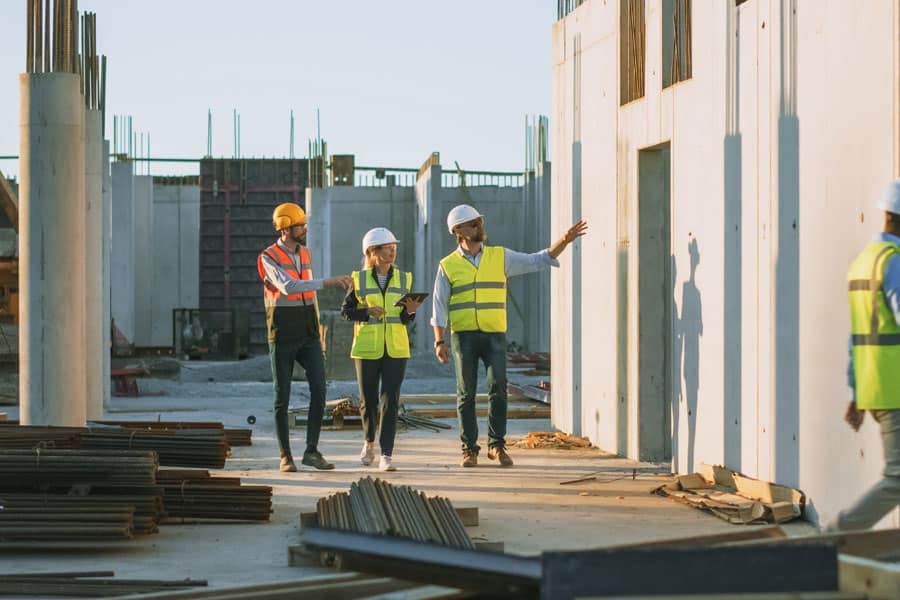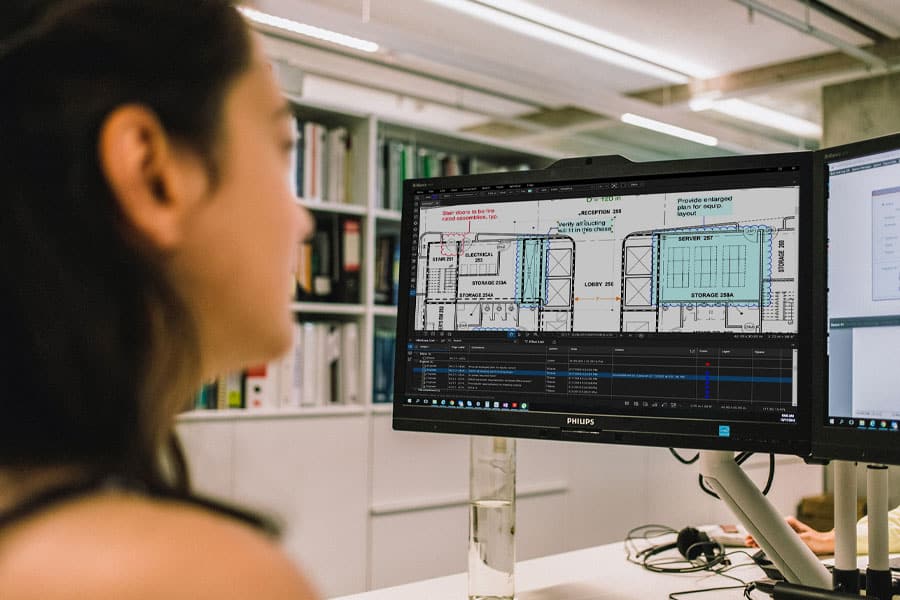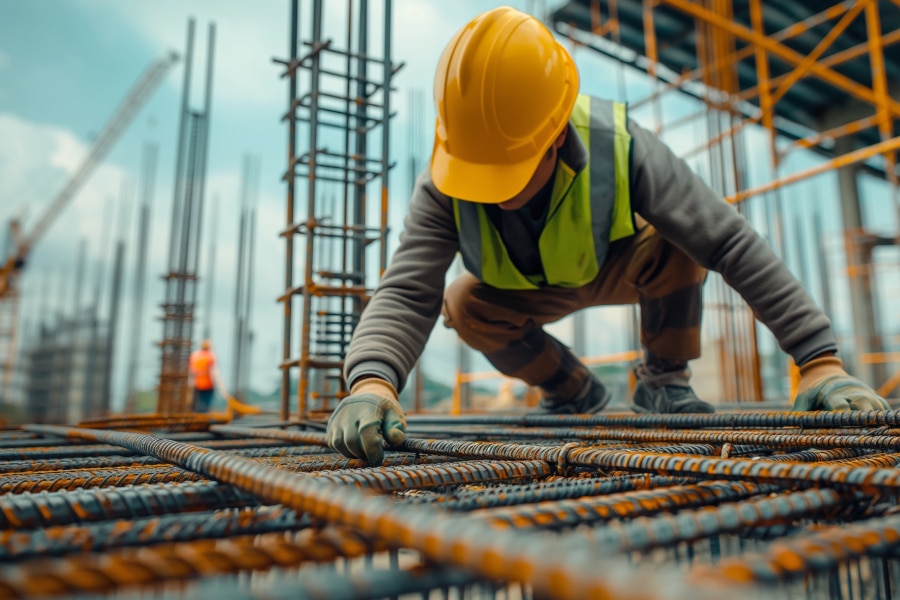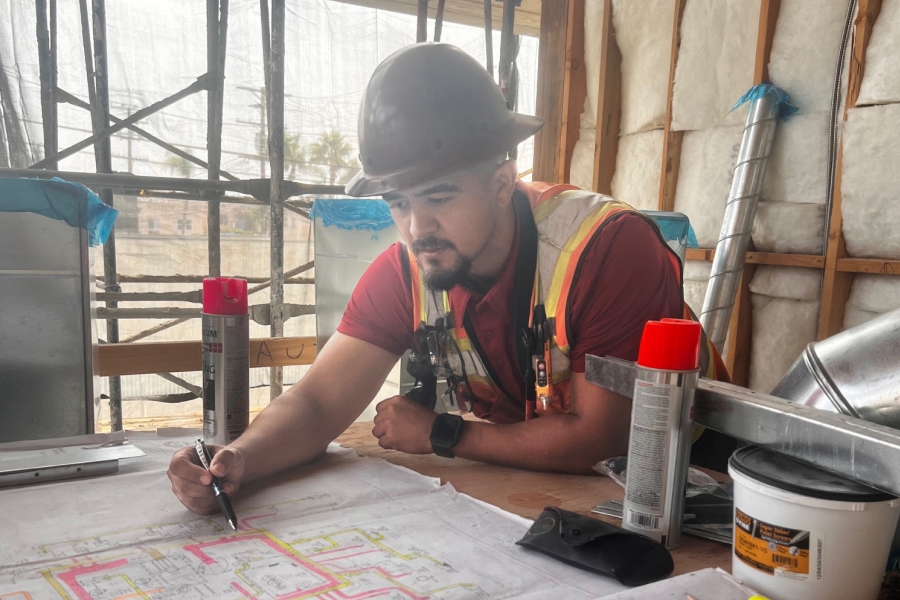When is a construction project not just about building infrastructure? Always!
As a primary economic driver, the construction and infrastructure of sector also drives change and growth across communities.
How? Through employment, innovation, building industry, community safety, transport, accessibility and in so many other ways. Your construction business changes the lives of individuals, regions and economies.
Recognising the power that the construction sector wields, all levels of Australian governments are increasingly looking to capitalise on the industry’s activity to leverage other priorities – such as local employment, employment diversity, traineeship and trades development, local industry growth, social impact initiatives and more.
Why governments use procurement to drive other priorities
Through the buying power that major public construction projects bring, governments are able to influence and drive incentives for every dollar of investment to also impact the economy, community and environment. Understanding, anticipating and responding to this driver means that your construction business is better positioned to win tenders and ongoing projects.
For example, the Victorian Government has introduced a Social Procurement Framework that is designed to align with a series of the state’s key priorities including First Nations owned businesses, social enterprises, people with a disability, women’s equality and safety, the long-term unemployed and environmental sustainability.
To win lucrative contracts and ongoing programs of work, construction businesses should be aware of their local environment and the types of priorities governments are focused on – and shape their tender to respond to these needs.
Focus areas your construction business should be prepared to respond to may include some of the following:
- Gender Equity Plan
- Industry Participation Plan/ Buy local Plan
- Community Development Program/ Corporate Social Responsibility Strategy
- Environment and Sustainability Strategy
- Indigenous Employment Plan
In this blog we explore some of the areas your construction business will need to demonstrate evidence of delivering to in order to be best positioned to win lucrative contracts and build sustainable business outcomes.
Gender equity and diversity plan
It’s no secret that all industries are finding it difficult to secure talent – and the construction industry faces a greater challenge as an industry plagued by a lack of gender diversity.
Women currently represent just 2 % of the construction workforce. That’s 2% of a workforce supporting more than $200 billion of construction activity in Australia each year. It’s a statistic none of us can or should ignore.
The public sector’s bid to influence gender diversity is a win for industry, the government and community. It results in a workforce that is better placed to deliver projects in time and on budget.
In building your gender diversity plan consider:
- Accessing traineeship and development programs and funding to help women enter the workforce from the ground up;
- Partnering with support networks such as Women in Construction;
- Bringing experienced staff and incoming talent together to mentor and drive development.
There is a recent addition to the Victorian Government’s suite of social procurement policies: the Building Equality Policy. The purpose of this policy is to create a more gender-inclusive construction industry by setting training and employment targets for women in this sector
For construction businesses seeking support to improve gender balance across their operations, the National Association of Women in Construction (NAWIC) Women in Construction program offers women a clear career pathway into the industry and also offer advice towards achieving gender participation targets.
Industry Participation plans
An Industry Participation Plan should address how full, fair and reasonable opportunity for local businesses, industry and labour will be provided. It should apply to all stages of a project, including planning, design, initiation, development, tendering, construction, operation and, where appropriate, rehabilitation.
Why should your construction business demonstrate that it is committed to growing others within the region?
Local industry participation drives growth and opportunity for those industries, businesses and employees – which leads to regional economic and social prosperity. And when local economies prosper, businesses can innovate and diversify and the skills and talents of people are also enhanced.
Your plan should show how you intend to:
- Partner with other businesses across your local supply chain;
- Identify where there may be gaps and opportunities – which also reduces the risk of supply challenges in the event of global interruptions and shortages;
- Build networks where industry players support and enhance innovation and business capability;
- Promote your partnership opportunities such as forming consortiums for larger project opportunities.
Your commitment to local industry will result in a greater availability of products and services, encourage regional economic development and also drive resilience and innovation.
The Western Australian Industry Participation Strategy (WAIPS) offers an example of how governments support local industry, in particular small and medium sized businesses, and offer greater opportunities to access and compete for State Government contracts.
Across the state, suppliers must develop a participation plan as part of their tender bid for contracts. Depending on the value of the supply contract, they may need to prepare either a ‘core’ or ‘full’ participation plan.
A core participation plan is a simple plan that requires prospective suppliers to outline local economic benefits if they win the contract.
A full participation plan is more detailed and requires prospective suppliers to demonstrate how they will generate local economic benefits and provide a full, fair and reasonable opportunity to local industry, if they win the contract.
The WA Government uses the strategy as a tool to drive:
- increased access to, and raised awareness of, local industry capability;
- business improvement including workplace innovation and the use of new technologies and materials;
- more apprenticeships, training and job opportunities in Western Australia;
- greater opportunity for local industry to develop import replacement capacity through a fair opportunity to compete against foreign suppliers of goods or services.
Community Development Programs – Corporate Social Responsibility
Large scale construction projects often result in both positive and perceived negative impacts to the communities in which they are being delivered – for instance in major transport infrastructure development and new residential and commercial developments.
Governments often look to see how your business will build bridges with communities – through community infrastructure (parks, gardens,) sponsorships, partnerships and events. When bidding for a large-scale project that is likely to impact the community, consider what is lacking in the community and how your business can solve the unmet need and build good relationships.
Your Corporate Social Responsibility (CSR) plan shows how you will work to build relationships and positive outcomes with the community you are operating within. Positive relationships lead to better communication … aiming to result in reducing the risk of problems in completing the project on time and within budget.
Corporate social responsibility is a business model by which companies make a concerted effort to operate in ways that enhance rather than degrade society and the environment.
CSR helps both improve various aspects of society as well as promote a positive brand image of companies.
Environment and Sustainability Strategy
How will your contract impact on your local environment – and how will you manage this?
Environmental impact is not an optional focus area when competing for construction work – it is front and centre.
Environmental responsibility a pillar of corporate social responsibility and aims to help businesses introduce and embed ways to diminish their impact – and in some cases – improve their local environment. Some ways construction businesses may build sustainability into their planning is through:
- demonstrating changes in manufacturing processes that will reduce pollution, waste, natural resource consumption, and emissions;
- recycling goods and materials and also encouraging re-use practices with customers;
- offsetting negative impacts by replenishing natural resources or supporting causes – for example a development that requires significant land clearing may create new plantings in adjacent locations;
- transporting goods in ways that the least impact on emissions and pollution.
- creating product lines that enhance these values. For example, a company that offers a gas lawnmower may design an electric lawnmower.
Indigenous Employment Plan
Building construction industry workforce opportunities for Aboriginal and Torres Strait Islander people across Australia is driving generational change.
As Indigenous-owned companies such as Victorian Civil Construction organisation Wamarra reports, Indigenous Employment Plans are not only about filling contract roles for projects – they are about initiating and developing careers.
“Creating an environment where our employees are engaged full time, each with a training and development pathway, means employees not only to perform their role better within the business but acquire new skills which hopefully they can take back to their community,” Wamarra Managing Director Hayden Heta said.
“What makes me the most makes me proud is the success of our employees – we have employees now purchasing their first homes that their first home in the lineage of their family. I think if we talk about breaking the back of poverty or Closing the Gap or creating self-determination that things it’s little things like that that I guess the broader population might take for granted actually.
Your Indigenous Employment Plan should identify partnerships and methods for building your First Nations Workforce, alongside actions for:
- creating a culturally safe work environment;
- partnering with schools, training organisations and Indigenous employment agencies to identify and secure First Nations team members;
- culturally appropriate onboarding;
- mentoring, training and development;
- career progression pathways.
Getting started
We understand – it’s a lot.
However, this isn’t an all or nothing approach. Start with the basics of each plan.
Select three focus areas underneath each plan for your first year – for instance in your environmental sustainability plan you may choose to focus on strategies to avoid producing waste through your product and materials supply chain, reusing products and finding a partner in your supply chain to recover and recycle waste.
The foundations of your plans can be built on – and this approach will demonstrate that your business is committed to delivering optimal value in your tenders. This will result in your construction business increasing its competitiveness and winning more work. And many of these initiatives will result in your business operating more efficiently and profitably. A win-win for all.












